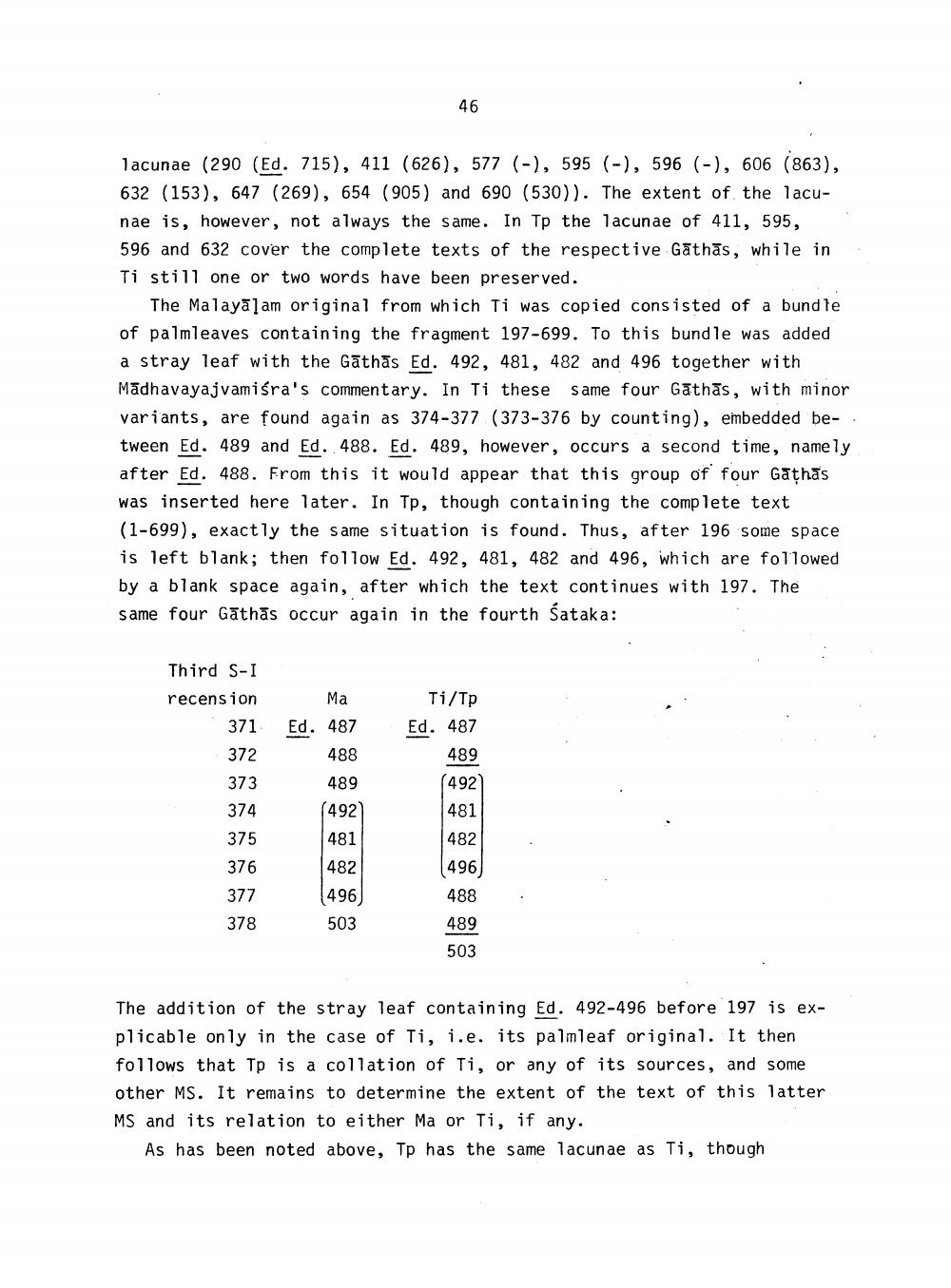________________
46
lacunae (290 (Ed. 715), 411 (626), 577 (-), 595 (-), 596 (-), 606 (863), 632 (153), 647 (269), 654 (905) and 690 (530)). The extent of the lacunae is, however, not always the same. In Tp the lacunae of 411, 595, 596 and 632 cover the complete texts of the respective Gathās, while in Ti still one or two words have been preserved.
The Malayalam original from which Ti was copied consisted of a bundle of palmleaves containing the fragment 197-699. To this bundle was added a stray leaf with the Gathās Ed. 492, 481, 482 and 496 together with Madhavayajvamiśra's commentary. In Ti these same four Gathās, with minor variants, are found again as 374-377 (373-376 by counting), embedded be- . tween Ed. 489 and Ed. 488. Ed. 489, however, occurs a second time, namely after Ed. 488. From this it would appear that this group of four Gatha's was inserted here later. In Tp, though containing the complete text (1-699), exactly the same situation is found. Thus, after 196 some space is left blank; then follow Ed. 492, 481, 482 and 496, which are followed by a blank space again, after which the text continues with 197. The same four Gāthas occur again in the fourth Sataka:
Third S-I recension
371 372 373 374 375 376 377 378
Ma Ed. 487
488 489 (492) 481
Ti/Tp Ed. 487
489 (492)
482
(496 503
482 (496) 488 489 503
The addition of the stray leaf containing Ed. 492-496 before 197 is explicable only in the case of Ti, i.e. its palmleaf original. It then follows that Tp is a collation of Ti, or any of its sources, and some other MS. It remains to determine the extent of the text of this latter MS and its relation to either Ma or Ti, if any.
As has been noted above, Tp has the same lacunae as Ti, though




